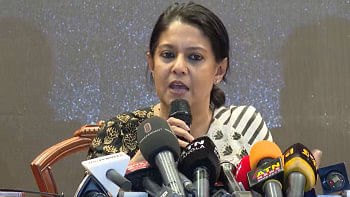Cautionary monetary policy
Overall, the monetary policy statement is appropriate for the current state of the economy.
The key macro targets are closer to reality. Gross domestic product growth is projected at around 7 percent, based on expectation of a recovery in export growth and turnaround of remittance decline supported by strong demand from trade, construction and SMEs.
While this may still be on the optimistic side, it reflects better the information on growth based on the high frequency indicators. The average inflation is projected to be within 5.3 to 5.6 percent while recognising that core inflation remains elevated at around 7.6 percent and the one-year ahead inflationary expectation is at 6 percent.
The macro-monetary balance is logical. Broad money growth target of 15.5 percent is in line with the projected nominal GDP growth of 13 percent plus a 2.5 percent allowance for monetisation of the large informal economy and financial inclusion.
This is adequate to accommodate the government's 7.2 percent GDP growth target without risking macroeconomic instability.
Private sector credit growth target is unchanged at 16.5 percent, with ample room for further adjustment during the rest of the year because of the ambitious target of 16.1 percent growth in credit to the public sector. However, this may be challenged somewhat if the 10.1 percent growth target for Net Foreign Assets is overshot.
The cautionary stance on the policy rates is a step in the right direction. Policy rates have been kept unchanged considering "the fact that core inflation and inflation expectations remain elevated and inflation risks from higher commodity prices are on the upside". At the same time, flexibility is maintained by committing to review the policy rates on a continuous basis.
The MPS notes adequately the potential risks in playing the capital market. The guardian of the financial system has urged to keep the recent exuberance rational and quite rightly advised the banks to upgrade their surveillance of loan usages. It also commended the Bangladesh Securities and Exchange Commission for their cautionary messages and financial literacy promotion. At the same time, Bangladesh Bank has committed to tighten monitoring to ensure banks abide by statutory limits on their capital market exposures.
There is some indication of the future direction of monetary policy framework. The MPS rightly recognises that with growing external integration, monetary policy framework will need to move towards interest rate targeting from the current monetary stock targeting. A pre-requisite for interest rate targeting is a well-functioning bond market to enable the policy rates to influence the longer term interest rates. In this regard, reforms to rationalise various risk-free rates and shift the composition of domestic financing of budget deficit toward market-based instruments have been rightly emphasised.
The MPS is a little short on addressing concerns on credit quality and reserve management. On credit quality, the statement falls short of being innovative. There is more of the same by urging banks to improve corporate governance while BB will continue to strengthen its supervisory scrutiny using more the IT-based online supervision tools and placing observers in banks with governance challenges.
Also, the MPS is silent on the current BB stance on reserve management, particularly with regards to the proposals recently floated on the creation of a Sovereign Wealth Fund and BB's own initiative to use reserves for financing garment and footwear exports.
The writer is the lead economist of the World Bank's Dhaka office


 For all latest news, follow The Daily Star's Google News channel.
For all latest news, follow The Daily Star's Google News channel. 



Comments